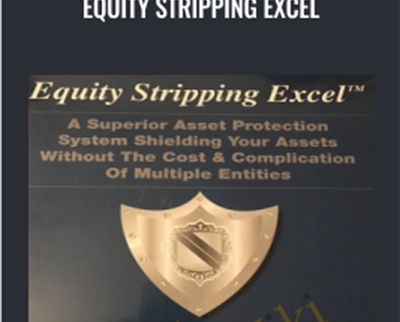Buy Real Estate and REIT Modeling – Brian DeChesare Course at GBesy. We actively participate in Groupbuys and are committed to sharing knowledge with a wider audience. Rest assured, the quality of our courses matches that of the original sale page. If you prefer, you can also buy directly from the sale page at the full price (the SALEPAGE link is directly provided in the post).
 But if you want the most effective and efficient preparation for real estate interviews, Excel-based case studies, and the job itself, this is the course for you.
But if you want the most effective and efficient preparation for real estate interviews, Excel-based case studies, and the job itself, this is the course for you.
Real Estate and REIT Modeling by Brian DeChesare,
Salepage link: At HERE. Archive: http://archive.is/cXQhn
Here’s How to Master Real Estate Financial Modeling, Learn REITs Like a Pro, Dominate Your Interviews, and Fast-Track Your Way to Top Bonuses and Exit Opportunities
Includes a One-Weekend Quick-Start Pathway for Fast Results in 48 Hours – and a Parallel Advanced Pathway for In-Depth Mastery
- Get a crash course on the most important topics in Real Estate Financial Modeling via 8 separate 30-minute, 60-minute, and 90-minute real-life case studies.Skip the boring textbooks and theory – you can finish these case studies in a weekend and get up to speed in a fraction of the normal time required.
- Extend your knowledge beyond the crash course with 9 longer, 2-to-4-hour modeling tests that include more complex Excel formulas, case study prompts, and investment recommendations. These cases prepare you for the job itself as well as more advanced interviews.
- Understand the industry by doing – the best way to “learn the lingo” is by completing exercises that require you to implement “the lingo” in Excel.
- Master the concepts in no time with 300+ pages of written guides to individual properties and REITs that lay out the most important points. These guides include hundreds of interview questions and answers, and they’re the fastest way to review and refresh your knowledge.
- Test yourself with 126+ practice quiz questions and a challenging certification quiz at the end of the course. Pass these, and you’ll know you belong in the room come interview time.
- Get expert support 365 days per year(including all your questions answered) from real-world experts who invest in real estate and have dissected countless case studies and modeling tests for students and professionals.Real Estate & REIT Financial Modeling 2.0 teaches you how to master the questions and case studies you’ll need to win offers at the top real estate private equity firms, brokerages, development firms, and investment banks.
There’s a lot of “real estate training” out there, but most courses and books make 3 big mistakes:
- Their models and examples are too complex and convoluted; no one has time to review a 5,673-row Excel file that took 412 hours to build.
- Their materials are not based on real-life case studies, but on the author’s imaginary view of what’s useful.
- They don’t help you to prepare efficiently. Yes, it’s nice to have 571 Excel files and 142 hours of video… but what if you only have 1 week, 2 days, or 4 hours to prepare for your interview?
Gain an Unfair Advantage by Quickly Conquering the Two Topics That Matter Most in Any Real Estate Interview:
When you cut away all the nonsense, two topics matter more than anything else in any real estate interview:
- Your interest in real estate and knowledge of the industry.You must be able to discuss real estate trends, industry norms, and deal analysis fluently to win offers.If the interviewer asks you to describe a property or real estate deal that interests you, and you can’t think of anything, the interview’s over.
- Your ability to answer technical questions competently, complete modeling tests, and prove that you can do the work.Technical knowledge is required to win offers. If you can’t explain concepts such as Cap Rates, NOI, TIs, LCs, and different lease types, you’re finished.And if you can’t complete Excel models for acquisition, development, and renovation deals, why even bother stepping into the interview room?
Our Real Estate Financial Modeling Course is designed around these two critical topics.
Yes, there’s a lot of other stuff in here – overview presentations, quizzes, data gathering, sample investment recommendations, and more.
But if you answer questions in these two categories like a pro, the rest is icing on the cake.
Highlights of the Real Estate & REIT Financial Modeling 2.0 Course Include:
- The Quick Start Guide gives you study plans for a few hours up to a week or more, so you know what to focus on with limited time. If you have more time, great – but get the fundamentals right first!
- Understand Industry Lingo and What Real Estate is “All About”:Quick overview lessons help you get up to speed about the main types of properties, deals, and financing structures, and avoid days of wasted time going down the “Google random terminology endlessly” rabbit hole.
- Translate Case Study Instructions into Excel: Many courses provide Excel models and templates, but no one ever explains the true challenge of real estate case studies: How to translate written instructions and questions into Excel models – which is why we focus on it. And, of course, we show you how to complete those models and use them to answer the case study questions.
- Get Up to Speed Quickly on REIT Accounting and Valuation: We cut through all the junk online – the confusing, bloated information from random 15-year-old contributors – and spell out exactly how accounting, the financial statements, valuation, and M&A and LBO modeling differ for REITs. That also includes differences between U.S. GAAP and IFRS (good luck finding this explained anywhere else) and between REITs that own different property types.
- Learn Both Debt and Equity Analysis: Most courses and textbooks present equity analysis for properties and REITs, but stop short of including debt. This seems bizaare to us since nearly all real estate deals and companies involve debt – so we cover the whole spectrum and walk you through how to analyze debt deals, calculate credit stats and ratios, and answer credit questions in every case study in this course.
- Quickly Review the Key Points with Comprehensive Written Guides:There’s no substitute for doing the work and completing the case studies in this course, but if you just need a quick review, the written summaries will get you up to speed on the main concepts – fast.
- Practice Making and Writing Investment Recommendations:You’ll learn how to summarize the output of models for both individual properties and REITs and present investment recommendations – including clear yes/no decisions, qualitative and quantitative support for your decision, risk factors, and how to mitigate the risk. You’ll use these concepts every day on the job, and also in more advanced interviews.
- Learn Both “Quick and Dirty” and More Complex Models: If you only have 30-60 minutes to analyze a deal, no problem – there are models and examples for that scenario. But if you have several hours or days, there are more complex examples suited to in-depth analysis.
- Test Your Knowledge with Practice Quizzes and Certification Quizzes:You can take a practice quiz at the end of each module in the course to test yourself, reinforce the concepts, and determine what you need to review. And then there’s the end-of-course Certification Quiz that tests your knowledge of everything – pass it with a score of 90%, and you’ll receive a Certificate that you can add to your resume or CV and mention in interviews.
- 365-Day-Per-Year Expert Support: We have a team of experienced professionalsstanding by to respond to your questions, comments, and emails 365 days per year, for as long as you need. There are somelimitations on this service – we can’t do your homework for you – but career-related, qualitative, and technical questions are all covered.
- Unconditional 12-Month Money-Back Guarantee: We’re so confident that the Real Estate Financial Modeling Course is the most practical and effective program of its kind that it comes with an unconditional money-back guarantee for 12 months. You can request a refund for ANY reason, and there’s no “fine print” – that’s how much we believe in these courses.
But… There Are Some Topics This Course Doesn’t Cover, So It May Not Be for You!
We believe in radical transparency, so I don’t want to mislead you about what this course can do for you.
We focus on individual properties and real estate investment trusts (REITs).
Our goal is to prepare you efficiently for Excel-based case studies and interviews and get you up to speed on the job quickly.
As a result, we specifically exclude certain topics:
- Excel Shortcuts and Basic Knowledge of Accounting and Finance: You must already know these topics to complete this course. If you do not, you should register for our Excel & Fundamentals course instead of this course or in addition to it (and then complete the Excel & Fundamentals material first).Here’s a simple test: Do you know what PV, NPV, and IRR mean? And could you write an INDEX/MATCH function to retrieve data in Excel? If not, start with the Excel & Fundamentals course.
- Every Single Combination of Models, Property Types, and REITs: Our goal is efficiency, not bells and whistles. We do cover a wide variety of companies, properties, and deals, but we do not attempt to teach all 5,413 possible combinations of property types, sub-industries, and geographies.
- ARGUS and Other Non-Excel-Based Software: Yes, ARGUS and other real estate-specific software can be very useful, but it’s not our focus. You will learn how to use the output from these programs in Excel, and you will learn how to replicate the functionality of these programs in Excel, but you won’t get tutorials on these programs. It’s a whole separate topic that would require another full-length course.
- Non-Property and Non-REIT Analysis: We do not teach private equity fund modeling (how entire investment funds, not individual properties, operate), nor do we cover gaming/lodging/homebuilding companies, real estate operating companies, or commercial mortgage-backed securities (CMBS). If we did, this course would be 200 hours long, and no one would ever complete it.
If you are interested in one of the topics above, you should look at offerings from other training providers.
But if you want the most effective and efficient preparation for real estate interviews, Excel-based case studies, and the job itself, this is the course for you.
Take a Look at What You’ll Get Immediately After Signing Up…
Here’s the full run-down of everything in Real Estate & REIT Financial Modeling 2.0:
Module 1: Real Estate Overview and Short Case Studies/Modeling Tests
In this module, you will get an introduction to Real Estate Financial Modeling, and you’ll practice key skills with short case studies/modeling tests across the main property and deal types.
Then, you’ll move into the real estate investment trust (REIT) lessons and learn how accounting, the financial statements, and valuation all differ.
These case studies are all short (30, 60, or 90 minutes) so you can get results and practice your financial modeling skills without needlessly complicated models or documents.
If you have limited time to prepare, you can complete this module in a weekend and feel confident and prepared for your interview by Monday morning.
- 6 Case Studies on Individual Properties: These include 2 office/retail acquisitions, an industrial development, a hotel acquisition/renovation, a pre-sold condominium development, and a multifamily acquisition. They range from 30 minutes to 90 minutes of completion time, and each one has a full video tutorial walk-through and written answers.
- 2 Case Studies on Real Estate Investment Trusts (REITs): These 90-minute case studies cover a U.S.-based REIT (Park Hotels) and a European REIT (Inmobiliaria Colonial SOCIMI), and they teach you how to project the three statements and value REITs with a DCF, DDM, NAV, and comparables. Each case study has accompanying video tutorials and written answers.
- 4 Overview Lessons: These video lessons and slides explain the main property and deal types and walk you through accounting, financial statement analysis, and valuation for REITs, including differences under U.S. GAAP and IFRS.
Module 2: 4-Hour Office Development Modeling Test (100 Bishopsgate)
In this module, you will complete a 4-hour real estate development modeling test for an office property in the City of London (100 Bishopsgate). You will expand on the simplified 90-minute version in the introductory module and build in support for a monthly schedule with flexible refinancing and exit dates and multiple scenarios.
You will also add support for tenants with different lease types, calculate returns to both equity and mezzanine investors, build a mixed IRR/multiple-based waterfall schedule, and add support for the Lookback Provision using VBA code.
Finally, you’ll answer the case study questions, make an investment recommendation for each investor group, quantify the risk factors, and explain how to mitigate the main risks.
- 10 Step-by-Step Lessons: These video tutorials walk you through how to complete the model efficiently and answer the case study questions, including how to make investment recommendations.
- Waterfall Returns Schedule with Mixed IRR and Multiple-Based Tiers: You’ll learn how to create a variation of the standard waterfall returns schedule and how to split up the cash flows based on the property’s performance.
- Brief VBA Tutorial: You’ll learn how to use VBA to add support for a “Lookback” function that evaluates the deal’s performance and then re-distributes the proceeds once the overall IRR is known at the end of the deal.
Module 3: 2-Hour Hotel Acquisition & Renovation Modeling Test (Jumeirah Beach Hotel)
In this case study, you’ll complete a 2-hour hotel acquisition and renovation modeling test based on a 5-star resort in Dubai, the Jumeirah Beach Hotel.
You’ll start by setting up assumptions for different market and operational scenarios, including Base, Upside, and Downside cases and Independent vs. Franchise cases, and you’ll use them to build a Pro-Forma for the property.
Then, you’ll set up the acquisition, exit, and financing assumptions, project the Debt service, calculate returns to equity investors, and set up sensitivity tables to analyze the deal outcome under varied assumptions.
Finally, you’ll make an investment recommendation, identify the key risk factors and explain how to mitigate them, and comment on the Independent vs. Franchise choice and the terms of the Permanent Loans.
- 6 Step-by-Step Lessons: In these video tutorials, you’ll learn how to set up and complete the model and how it expands on the simplified version in Module 1.
- Support for 6 Different Scenarios: You’ll learn how to add support for multiple market and operational scenarios, including Base, Upside, and Downside and Independent vs. Franchise cases – and how key assumptions like the ADR and Occupancy Rate change in these cases.
Module 4: 3-Hour Multifamily Acquisition & Credit Case Study (The Lyric)
In this case study, you will build a multifamily acquisition and credit analysis model and make an investment recommendation on the Senior Loan, Mezzanine, or Preferred Equity used to fund the property.
You’ll start by building a standard Pro-Forma for The Lyric, a 234-unit multifamily property in Seattle, and you’ll add support for the acquisition, exit, and debt service, as well as the equity returns calculations.
Then, you’ll calculate the returns and recovery percentages for the lender groups in different scenarios and exit dates, and you’ll create sensitivities to further “stress test” the deal.
Finally, you will build a DCF to value the property, evaluate comparable properties and a Replacement Cost analysis, and answer case study questions about the debt and equity, the operating assumptions, the risk factors, and the valuation.
- 9 Step-by-Step Lessons: In these video tutorials, you’ll extend the multifamily acquisition model from Module 1 and add credit analysis and valuation sections, as well as multiple scenarios and more complex financing assumptions.
- Credit Analysis: You’ll learn how to tweak a standard real estate model and add credit features, such as recovery and IRR analysis, as well as support for prepayment penalties, equity grants, interest-only periods, and interest rate floors and spreads.
- Valuation/DCF Analysis: You’ll use data from comparable properties and recent property sales and build a DCF analysis to draw conclusions about the purchase price.
Module 5: 4-Hour Office/Retail Acquisition & Renovation Modeling Test (45 Milk Street)
In this case study, you will build an acquisition and renovation model for a mixed-use office/retail property and make investment recommendations for the Limited Partners, General Partners, Senior Lenders, and Mezzanine Investors.
You’ll start by setting up the transaction assumptions for 45 Milk Street, a 61,000-square-foot property in Boston, and then you’ll build a monthly and annual Pro-Forma that supports different lease types, start dates, and expiration dates, including Percentage Rent leases.
Then, you’ll project the Debt Service, including a TI/LC/CapEx Holdback released on a monthly basis, and you’ll calculate the returns to each investor and lender group.
In the Waterfall Returns Schedule, you will build in support for Preferred and Catch-Up Returns, and you’ll create sensitivity tables to analyze different outcomes.
Finally, you’ll use the model to make an investment recommendation for each group and explain how to mitigate the risk factors – or, for negative recommendations, what must change for the deal to work.
- 10 Step-by-Step Lessons: You’ll learn to combine elements of the office development model and the hotel acquisition/renovation model in this set of video tutorials.
- Replicate ARGUS in Excel: You’ll create a monthly tenant-by-tenant schedule that replicates much of the functionality of ARGUS in Excel (with certain constraints) – including support for Loss to Lease, Concessions & Free Rent, Absorption& Turnover Vacancy, Tenant Improvements, Leasing Commissions, Expense Reimbursements, General Vacancy, Percentage Rent, and more.
- Alternate Waterfall Schedule: You’ll create a waterfall schedule with a Preferred and Catch-Up Return for different investor groups, and you’ll understand how this factors into the investment recommendation.
Module 6: 2-Hour Pre-Sold Condo Development Modeling Test (Heritage Cyrela)
In this case study, you will build a condo development model for the Heritage Cyrela, a super-high-end luxury complex in São Paulo. You will then use the model to make investment recommendations for the Limited Partners and Developers and identify the key risk factors in the deal.
You’ll start by setting up the transaction assumptions and the construction timeline, including the monthly pre-sales of condo units in each phase and the start and end of the construction period.
Then, you’ll project Gross Sales based on initial, construction-end, and final deposits, and you’ll forecast the Hard Costs, Soft Costs, FF&E and Move-In Costs, and Land Acquisition Costs.
You’ll use this monthly cash flow model to project Equity and Debt draws, interest, and principal repayment, and then you’ll build a Waterfall Returns Schedule with a Preferred Return, Catch-Up Return, and tiers based on a mix of IRRs and equity multiples.
Finally, you’ll create an annual summary, Sources & Uses schedule, and sensitivity tables to summarize everything and answer the case study questions.
- 7 Step-by-Step Lessons: You will expand on the simplified condo development model from Module 1 and add additional phases and sales triggers, as well as a more complex Debt/Equity treatment. These video-based lessons walk you through the whole process.
- More Complex Waterfall: You will learn how to build a waterfall returns schedule with support for a Preferred Return to the 3rd Party Investors, followed by a Catch-Up Return to the Developers, followed by cash flow splits that are based on a mix of IRRs and equity multiples – and you will do all this on a monthly basis.
Module 7: 4-Hour (or 1-Week) REIT Valuation Modeling Test (AvalonBay)
In this case study, you will build a 3-statement model and valuation for AvalonBay, a leading U.S.-based multifamily REIT. You will then use the model to create a hedge fund/asset management stock pitch, an equity research report, and an investment banking pitch book for the company.
You’ll start by projecting the company’s developments, redevelopments, acquisitions, dispositions, and unconsolidated real estate (equity investments), and you will use these segment-level projections to build a 3-statement projection model.
Then, you will value the company using a Net Asset Value (NAV) Model, Comparable Public Companies and Precedent Transactions, and a Discounted Cash Flow (DCF) Analysis based on a 10-year projection period. You’ll also get practice finding the data and adjusting the numbers based on disclosures in SEC filings.
You’ll then summarize the results of this valuation and use it to outline a stock pitch for the company, including the investment thesis, catalysts, risk factors, and ways to hedge against the main risks. Finally, you’ll tweak this pitch to create an equity research report and an investment banking pitch book with a debt vs. equity recommendation for the company’s financing requirements.
If you complete only the model here, it’s a 4-hour case study. If you also draft the stock pitch and the other documents for a more in-depth exercise, it’s closer to a 1-week case study.
- 20 Step-by-Step Lessons: Learn how to expand on the REIT models from Module 1 and add additional operating assumptions, gather and adjust data for the comparables, and support multiple scenarios; you’ll also learn how to handle JVs and Equity Investments and how a more complex NAV Model works. These videos explain the entire process.
- Hedge Fund Stock Pitch: You’ll learn how to outline and draft a short stock pitch in both written (Word) and slide (PowerPoint) format, and you’ll understand how to craft an investment thesis and research catalysts, risk factors, and ways to mitigate the risk for REITs.
- Equity Research Report: You’ll learn how to tweak the stock pitch to create an equity research report that presents similar ideas, but changes the tone, focus, and presentation for use in a different context.
- Investment Banking Pitch Book: You’ll learn how to make a Debt vs. Equity recommendation for AvalonBay, and you’ll get an example of a short pitch book presentation you can use to present your findings and argue for a different financing mix.
Module 8: 2-Hour REIT Debt vs. Equity Case Study (SPH REIT)
In this case study, you’ll project the performance of individual properties for SPH REIT, a Singaporean retail REIT, on a half-year basis, and you’ll create a 3-statement model that supports the S$ 500 million acquisition of Seletar Mall, a new property, using Equity and Debt.
You will create Base, Downside, and Extreme Downside Cases based on market data, and you’ll use the different Rental Reversions, NPI Margins, and Cap Rates in those cases to assess the company’s credit stats and ratios (Gearing, Debt / EBITDA, EBITDA / Interest, and others).
Then, you’ll try different combinations of Debt and Equity until you find one that allows the company to achieve its targeted metrics and ratios (Distribution Yield > 5%, DPU Accretion >= 0%, Gearing <= 35%, and Interest Coverage >= 5.0x) across all the cases.
Finally, you’ll answer case study questions at the end, present your recommendation, explain the key risk factors and how to mitigate them, and examine other ways the company could change its capital structure to meet its targets.
- 6 Step-by-Step Lessons: You’ll learn how to create a half-year operating model for a REIT based on its individual properties, and how to incorporate scenarios and credit stats and ratios. These video-based lessons walk you through the whole process.
- Data Gathering Exercises: Unlike in some of the other case studies, which give you explicit numbers, here you’ll have to review documents and market data and use your judgment to come up with appropriate growth rates, margins, and other assumptions; our tutorials explain this process.
Module 9: 3-Hour REIT M&A and Merger Model Case Study (Digital Realty / DuPont Fabros)
In this case study, you’ll complete a quarterly merger model and supplemental analysis for Digital Realty’s $5.8 billion acquisition of DuPont Fabros, and you’ll learn how purchase price allocation and the combination of the financial statements differ for REITs.
You’ll start by reviewing each company’s standalone quarterly projections and NAV models, and then you’ll set up the transaction assumptions, including the Sources & Uses and Purchase Price Allocation schedules, including new items such as Above- and Below-Market Lease Intangibles.
Then, you’ll combine and project the financial statements, calculate key metrics such as accretion/dilution for FFO and AFFO per unit & share, and analyze the credit profile of the combined entity.
Since most REIT M&A deals are 100% stock, the Contribution Analysis and Value Creation Analysis are especially important; you’ll complete both here and use them to draw conclusions about the deal terms, the seller’s valuation, and the potential risk factors in the deal.
Finally, you’ll answer the case study questions at the end, make a recommendation for or against the deal, and see how you might present your findings in a short presentation as well.
- 12 Step-by-Step Lessons: You’ll learn how to build a full 3-statement merger model for REITs, including key differences vs. M&A deals for normal companies, and you’ll add REIT-specific analysis and use the model to answer the case study
Buy the Real Estate and REIT Modeling – Brian DeChesare course at the best price at GBesy.. After your purchase, you will get access to the downloads page. You can download all the files associated in your order at here and we will also send a download notification email via your mail.
Unlock your full potential with Real Estate and REIT Modeling – Brian DeChesare courses. our courses are designed to help you excel.
Why wait? Take the first step towards greatness by purchasing Real Estate and REIT Modeling – Brian DeChesare courses today. We offer a seamless and secure purchasing experience, ensuring your peace of mind. With our trusted payment gateways, Stripe and PayPal, you can confidently complete your transaction knowing that your financial information is protected.
Stripe, known for its robust security measures, provides a safe and reliable payment process. With its encrypted technology, your sensitive data remains confidential throughout the transaction. Rest assured that your purchase is protected.
PayPal, a globally recognized payment platform, offers an additional layer of security. With its buyer protection program, you can feel confident in your purchase. PayPal ensures that your financial details are safeguarded, allowing you to focus on your learning journey.
Is it secure? to Use of?
- Your identity is completely confidential. We do not share your information with anyone. So it is absolutely safe to buy the Real Estate and REIT Modeling – Brian DeChesare course.
- 100% Safe Checkout Privateness coverage
- Communication and encryption of sensitive knowledge
- All card numbers are encrypted using AES at relaxation-256 and transmitting card numbers runs in a separate internet hosting atmosphere, and doesn’t share or save any data.
How can this course be delivered?
- After your successful payment this “Real Estate and REIT Modeling – Brian DeChesare course”, Most of the products will come to you immediately. But for some products were posted for offer. Please wait for our response, it might take a few hours due to the time zone difference.
- If this happens, please wait. The technical department will process the link shortly after. You will receive notifications directly by e-mail. We appreciate your wait.
What Shipping Methods Are Available?
- You will receive a download link in the invoice or YOUR ACCOUNT.
- The course link always exists. use your account to login and download the Real Estate and REIT Modeling – Brian DeChesare course whenever you need.
- You only need to visit a single link, and you can get all the Real Estate and REIT Modeling – Brian DeChesare course content at once.
- You can do your learning online. You can be downloaded for better results and can study anywhere on any device. Make sure your system does not sleep during the download.
How Do I Track Order?
- We always notice the status of your order immediately after your payment. After 7 days if there is no download link, the system will automatically complete your money.
- We love to hear from you. Please don’t hesitate to email us with any comments, questions and suggestions.
![GBesy [GB] GBesy [GB]](https://www.gbesy.com/wp-content/uploads/2023/05/gbesy-Logo-full-100.png)



 Purchase this course you will earn
Purchase this course you will earn 


![[BIG Collection Real Estate] Real Estate Web Academy - Great Real Estate Giveaway](https://www.gbesy.com/wp-content/uploads/2023/05/5BBIG-Collection-Real-Estate5D-Real-Estate-Web-Academy-E28093-Great-Real-Estate-Giveaway.jpg)


Reviews
There are no reviews yet.